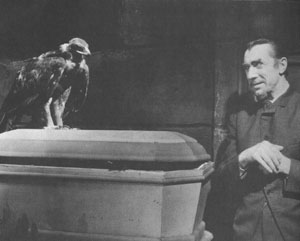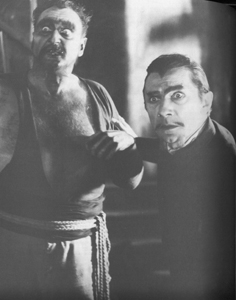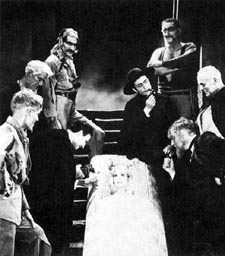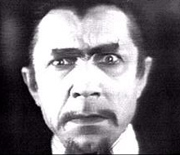
WHITE ZOMBIE

This is one of the underground classics of horror. Made on a shoestring and atrociously acted, the film nonetheless emerges as a strangely poetic fairytale about a beastly zombie master and the beauty he lures to his lair and functions in a dislocated , dreamlike manner reminiscent of Carl Dreyer's Vampyr (1931). As pretty Madeline (Madge Bellamy) arrives in Haiti to marry her finance (John Harron), her experience is almost as disorienting as David Gray's at the start of Vampyr: a twilight coachride past a furtive burial ceremony at a crossroads, then a troubling encounter by the wayside with Murder Legendre (Bela Lugosi), a sonorously satanic zombie master who supplies labour for the local mills and who inexplicably steals her scarf. Unknown to her, a fellow traveller (Robert Frazer) has enlisted Legendre's evil powers in the hope of bending her beauty to his lecherous will, and both men eventually become locked in a deadly struggle for possession of her temporarily spiritless body, kept captive in Legendre's castle, a quaint Gustave Dore eyrie perched on a clifftop.


Echoes of Dreyer surface again even more tangibly during a visit to the mill where Legendre's zombie slaves ceaselessly labour to turn a huge wooden wheel, its creaks and groans carrying precisely the same ominous charge as the rumbling machinery of the flour mill in Vampyr. The most striking resemblance to Dreyer's film is, in fact, in the orchestration of sound: haunting snatches of music and long passages of silence, with dialogue seving less as communication than as incantation (and providing Lugosi with a line as memorable as his "Children of the Night" speech in Dracula (1931), when Harron asks who the zombies are and is told, "For you, my friend, they are the angels of death").

![]()



![]()

The film has been rather laboriously interpreted as a parable about American isolationist fears during the Depression, with Lugosi as an archetypal symbol of decadent Europe determined to enslave the unwary. But it really needs no such excuses, since its network of strange and perversely erotic images - the voodoo doll wrapped in Madeline's scarf and thrust into a candle flame as a vulture screeches; Madeline arriving for her wedding in a long white gown that uncannily resembles a shroud; the single poisoned rose offered like some bizarre love token in a bridal bouquet - weave a potent spell that is hardly broken by occasional miscalculations where director (Victor Halperin) tries to inject some conventional horror motifs (notably long-held closeups of Lugosi's supposedly mesmeric eyes). This was in effect the first ever Zombie film.
